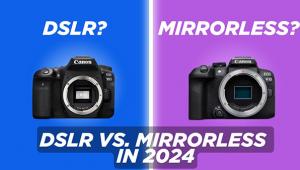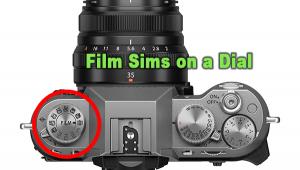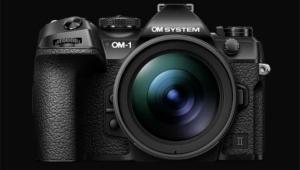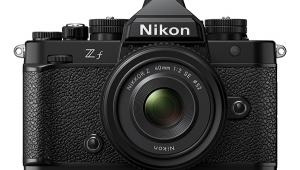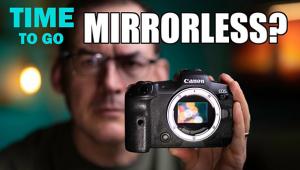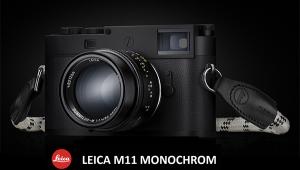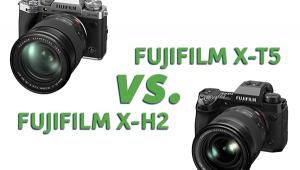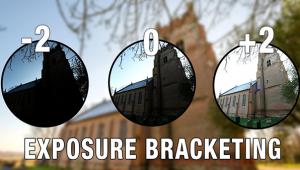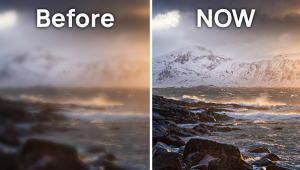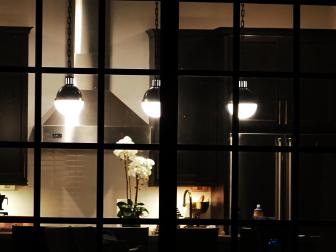The Goods: Our 4 Favorite Photo Products of the Month

Steady Shooter
Fujifilm has finally done it: the new X-H1 mirrorless camera is the company’s first to feature in-body image stabilization, which helps ensure sharper shots even when you’re using a non-image-stabilized lens. But that’s only part of the news about this X-series mirrorless camera: it also has a 24.3MP APS-C X-Trans CMOS III sensor and X-Processor Pro image processing engine, and adds a new Flicker Reduction mode, which is designed to give you more consistent image exposure under fluorescent and mercury lighting. Oh, and did we mention the Fujifilm X-H1 shoots DCI 4K, aka “true 4K,” at 4096x2160 pixels for cinema-level video, too? Well, it does, and boasts a pro-grade body that’s dust-, scratch-, and water-resistant and built to shoot in temperatures as low as 14 degrees Fahrenheit. There’s also an optional weather-resistant Vertical Power Booster Grip (VPB-XH1), shown with the camera in this image. But it’s the new five-axis, 5.5-stop, in-body image stabilization system, which uses three axial accelerometers, three axial gyro sensors, and a specially developed dual processor to achieve 10,000 calculations per second, that’s the real highlight with the X-H1—a mirrorless camera designed to keep things steady. You can read our full review of the Fujifilm X-H1 here.
Fujifilm X-H1
$1,899 (body only); $2,199 with the Vertical Power Booster Grip
fujifilmusa.com
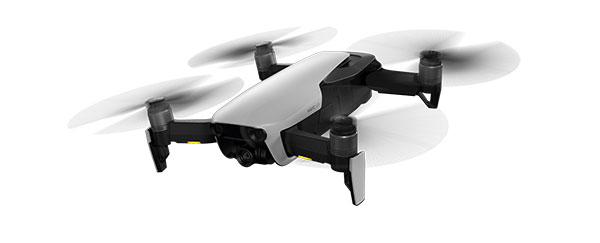
Air Catcher
DJI’s Mavic Air is a drone for people who might not like drones. Weighing just under a pound and resembling the shape of a large smartphone when folded up, the Mavic Air made its debut recently after being pulled from the pocket of DJI North America Director Michael Perry’s down vest at a press conference in New York City. Perry actually pulled three Mavic Airs from various pockets of his vest at the press conference to demonstrate how small and sleek the drones are when stowed away. The foldable Mavic Air has a three-axis gimbal for stability, 4K video shooting, and the ability to capture 36MP panoramic images from high in the sky. The Mavic Air adds new QuickShot modes, which fly preset patterns, so the user just needs to launch the drone to capture a scene in a unique way. The Mavic Air also adds SmartCapture, which lets you control the drone using just hand gestures, and FlightAutonomy 2.0 with Advanced Pilot Assistance Systems (APAS), which uses seven onboard cameras and infrared sensors in the drone to create a 3D map of the area to help avoid large objects such as trees and boulders when flying. The Mavic Air has a 1/2.3-inch CMOS sensor and a 24mm-equivalent f/2.8 lens that can shoot 12MP still images. It can shoot 4K video at 30 fps with a maximum bitrate of 100 Mbps. A new Sphere panorama feature automatically shoots and stitches together 25 photos to create a 32MP panoramic image in just a minute.
DJI Mavic Air
$799
dji.com

X Factor
The Panasonic Lumix GX9 offers the combination of portability and versatility that some photographers crave. A compact mirrorless camera that uses a 20.3MP Digital Live MOS Micro Four Thirds sensor without a low-pass filter, the Lumix GX9 is powered by Panasonic’s Venus Engine image processor. It adds the new L.Monochrome D “Photo Style” mode, which is designed to make it easier to shoot detailed dynamic monochrome photos with emphasized highlights and shadows. Grain Effect can also be adjusted in all monochrome modes with Photo Style. A five-axis Dual I.S. (Image Stabilizer) in the Panasonic GX9 helps suppress blur. The camera can shoot 4K videos in 3840x2160 resolution at 30p or 24p in addition to the Full HD 1920x1080 60p videos with practical full-time AF. The Lumix 4K Photo mode lets users capture individual moments by extracting single frames from 4K burst files shot at 30 fps to save as 8MP equivalent photos.
Panasonic Lumix GX9
$999
shop.panasonic.com

Scene Stealer
If you want to capture a full scene in rich detail, Sigma’s 14-24mm f/2.8 DG HSM Art lens is a great tool. Designed for cameras with over 50MP of resolution, the 14-24mm f/2.8 Art is made from three FLD glass elements, three SLD glass elements, and three aspherical lens elements, including one 80mm molded glass aspherical element. Sigma says this lens can capture wide shots with near zero distortion, along with minimal transverse chromatic aberration, flare, and ghosting. And, of course, you shoot at f/2.8 through the entire zoom range, letting you capture bright images in challenging lighting conditions with reduced blur. The Sigma 14-24mm f/2.8 Art features the company’s “Sports line level” dust- and splash-proof design with special sealing at the mount connection, manual focus ring, zoom ring, and cover connection, allowing for the lens to be used during varying weather conditions. The Sigma 14-24mm f/2.8 DG HSM Art comes in Canon, Nikon, and Sigma mounts and works with Sigma’s MC-11 Sony E-mount converter.
Sigma 14-24mm f/2.8 DG HSM Art
Price: $1,299
sigmaphoto.com
- Log in or register to post comments




